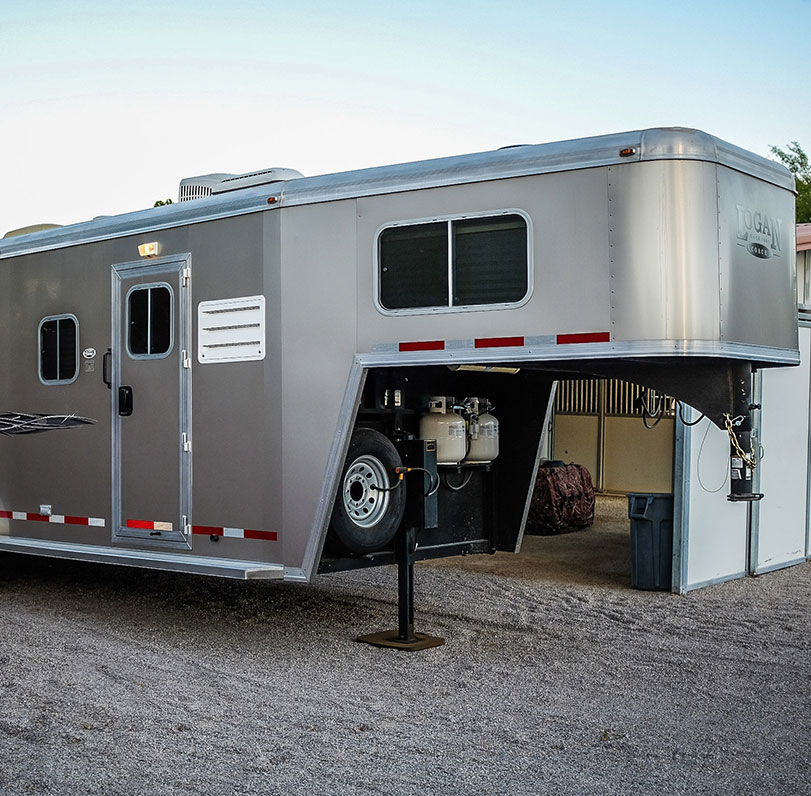
Inspect the Floor
How to Inspect Horse Trailer Floors
Trailer floors have changed over the years. Horse trailer floors were originally made from planks that needed to be replaced periodically. Then came pressure treated wood which drastically improved horse trailer floors, which were then followed by aluminum. Each presents its own challenges.
Pressure Treated Wood Floors
Untreated wood floors are pretty much a thing of the past. Pressure treated wood floors are still quite common and require basic care. They are visually inspected from the top and underneath and then probed with a dull knife or screw driver to look for rotted spots (see Fig. 3 & 4). With proper care a pressure treated wood floor can easily last 20 years. When we do see rot it’s most commonly at the back of the trailer from wet or dirty bedding being left in the trailer. Also, quite often people leave the top doors over the ramp open while the trailer is not being used allowing rain and moisture inside. Wood floors are relatively easy to replace if they do rot.
Floor has multiple holes and the area around the holes is very thin.

A screwdriver can poke a hole in the wood showing it is starting to rot.

Wood floor that needs to be replaced.
Aluminum Floors
Aluminum floors have taken over a large part of the market. The problem with aluminum floors is not really the floor as much as the perception that aluminum is maintenance free and will not “rot”, which is not the case. Horse urine and wet bedding when left in contact with an aluminum floor will cause corrosion (see Fig 1). To prevent this, the mats must be removed periodically so the floor can be washed and allowed to thoroughly dry. The bottom side of the mats should also be washed and allowed to dry before being put back in the trailer. With proper maintenance aluminum floors will last many years. Note, Fig 2 shows an aluminum floor repair.

Aluminum floor showing corrosion.

Same trailer after floor has been repaired.
Sorry, the comment form is closed at this time.



